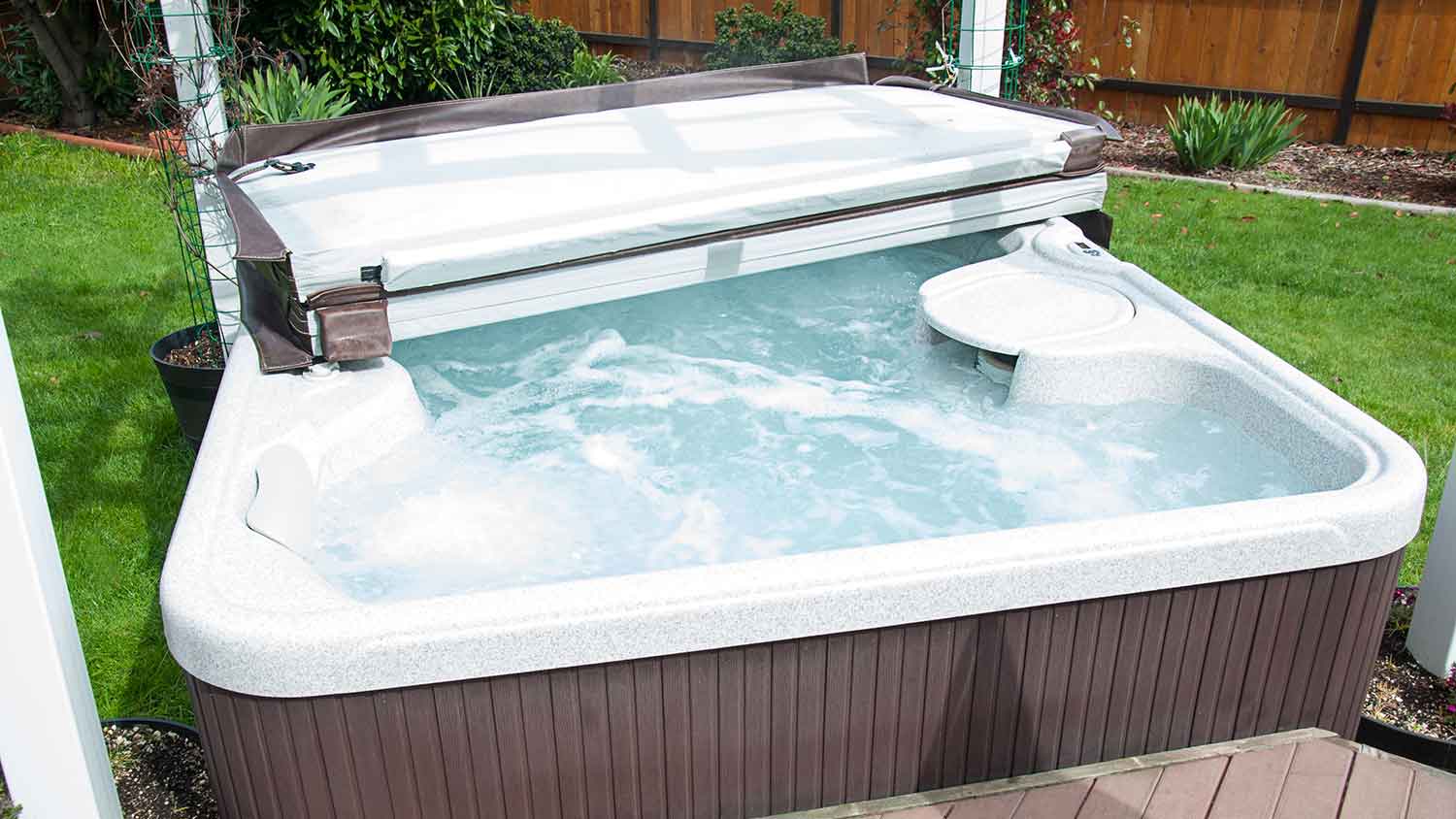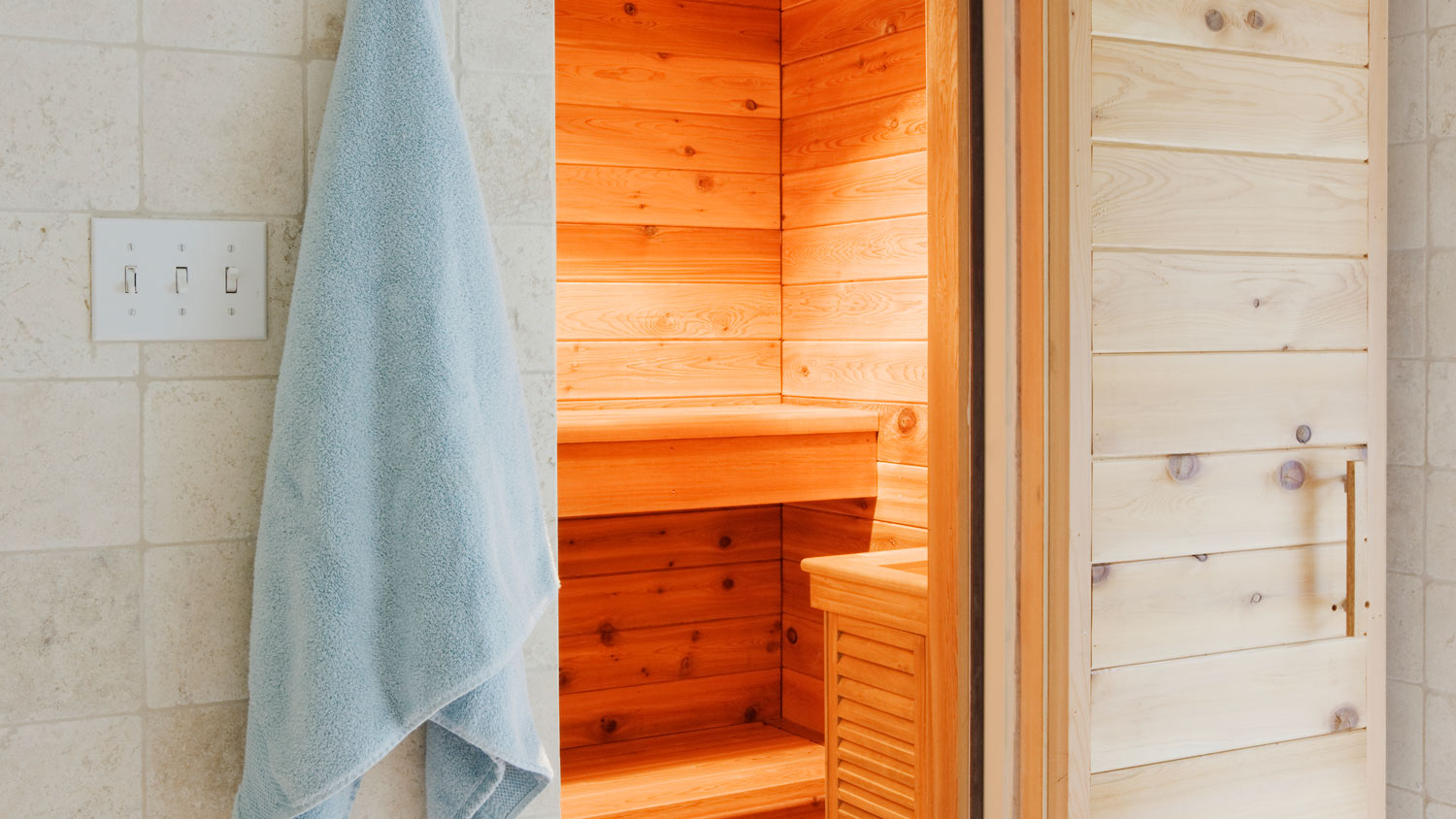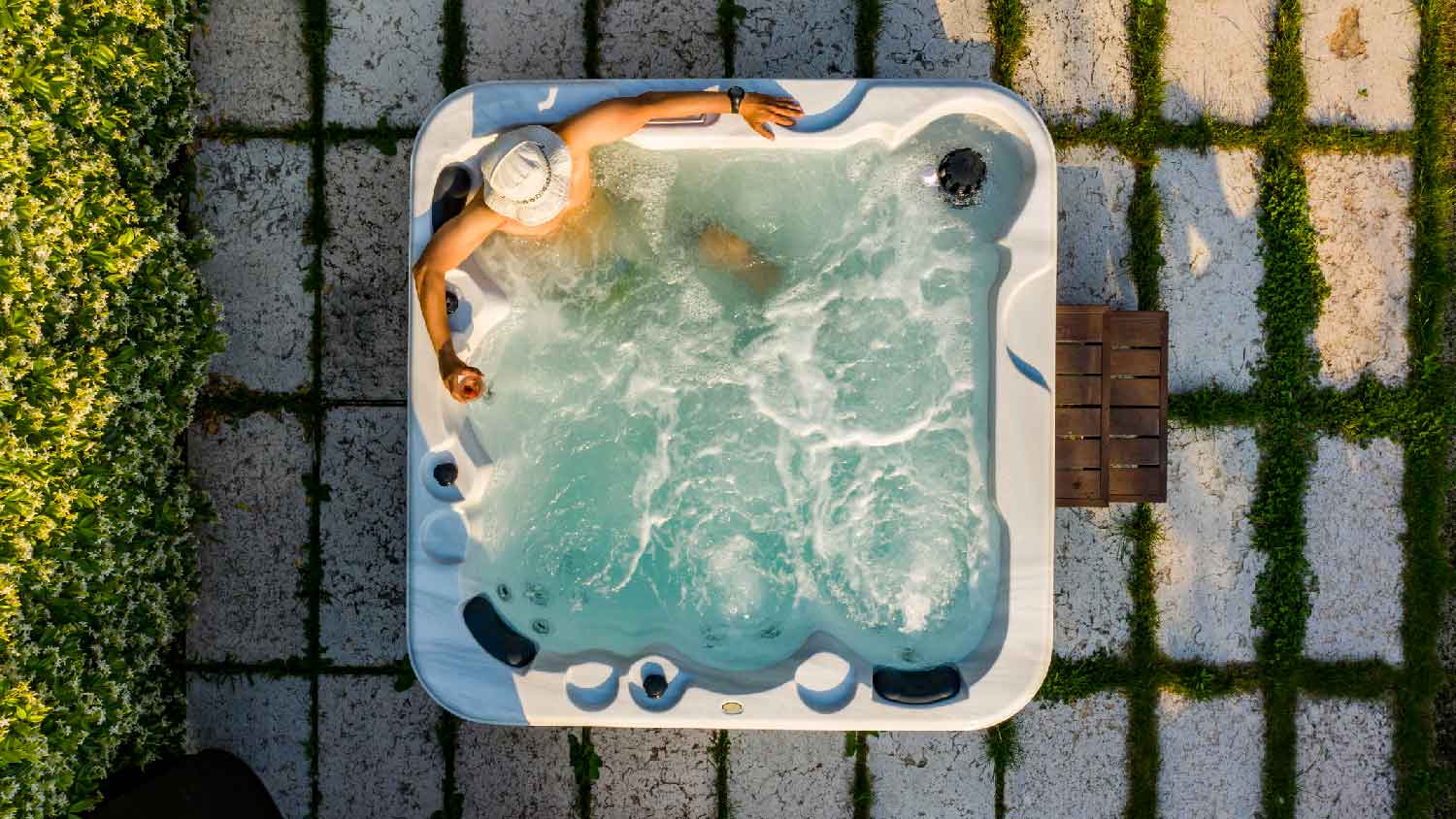
Wondering about hot tub cover costs? Learn what impacts pricing, compare materials, and discover ways to save on your next hot tub cover purchase.
The average cost to run a hot tub is $700 per year, with most homeowners spending between $350 and $1,100 annually. Main cost factors include the hot tub size, type, and energy efficiency.


Running a hot tub varies in expense based on hot tub size, material, location, insulation quality, and climate.
Professional hot tub maintenance costs $50 to $150 per hour and ensures a safe, durable hot tub that runs smoothly.
Running a hot tub involves ongoing expenses for electricity, water, and routine maintenance.
Regular upkeep and smart upgrades can help you get more years of enjoyment out of your hot tub, as well as lower long-term costs.
This article was created using automation technology and thoroughly fact-checked and edited by an Angi Editor in accordance with our AI policy.
The cost to run a hot tub is, on average, $700 annually, with annual costs ranging from $350 to $1,100. Homeowners may pay as little as $250 for a small, standard hot tub or up to $1,500 for a larger, custom-built tub. Understanding these costs helps you budget for year-round relaxation.
A hot tub is a rewarding home upgrade, but knowing the true cost of operation is essential for planning and peace of mind. We’ll break down every factor so you can enjoy your hot tub without surprises.
Understanding what impacts the cost to run a hot tub can help you make informed choices. From the type of tub to the materials and even your local climate, here’s what to keep in mind.
The type of hot tub you own plays a major role in your running costs. Above-ground and portable models are less expensive to operate than in-ground hot tubs or swim spas. Features such as powerful jets, advanced lighting, and high-capacity heaters can increase energy use. Inflatable tubs tend to be the least expensive up front, but they may cost more to run if they lack good insulation.
| Type | Monthly Running Cost | Features |
|---|---|---|
| Inflatable | $30–$50 | Less insulation, higher heat loss |
| Portable (Acrylic) | $40–$70 | Good insulation, moderate energy use |
| In-ground | $80–$100 | High setup and energy costs, excellent durability |
| Swim spa | $90–$120 | Larger capacity, powerful pumps |
The size of your hot tub, measured by water capacity and seating, directly affects energy and chemical costs. Larger tubs require more water and take more energy to heat, while smaller models are less expensive to maintain.
| Tub Size | Max Occupants | Monthly Running Cost | Water Capacity (Gallons) |
|---|---|---|---|
| Small | 2–3 | $30–$50 | 200–300 |
| Medium | 4–6 | $50–$80 | 300–450 |
| Large | 7+ | $80–$120 | 450–600+ |
Construction materials matter for both durability and energy efficiency. Acrylic shells, especially with quality insulation, help trap heat and lower energy bills. Vinyl and rotomolded plastic are more affordable but may require more frequent heating or replacement.
| Material Type | Impact on Cost | Durability |
|---|---|---|
| Acrylic | Lower with good insulation | High |
| Vinyl | Higher heat loss, moderate | Moderate |
| Rotomolded plastic | Moderate, depends on insulation | Moderate to high |
Professional installation and maintenance costs vary by region and complexity. Expect to pay electricians and plumbers $50 to $150 per hour, depending on your area. Hot tub technicians may charge a flat fee or hourly rate for setup and repairs. Regular servicing can keep your tub running efficiently and prevent costly breakdowns.
Site preparation is another cost to consider. This may involve pouring a concrete pad, reinforcing a deck, or upgrading electrical service. Permit fees and inspections may also be required. Filling the tub with water for the first time adds a small up-front expense.
It’s standard to tip hot tub delivery and installation crews. A typical tip ranges from $20 to $50 per crew member, or about 5% to 10% of the installation cost. For service professionals, tipping is appreciated but not always expected—consider tipping $10 to $20 for exceptional service.
Beyond the basics, several other factors can influence your total expenses:
Removing and disposing of an old hot tub if you’re replacing one
Cleaning and debris removal after installation
Additional permits and inspections for electrical or structural upgrades
Modifying a foundation or deck for support
Building framing or enclosures for in-ground or built-in models
Adding landscaping, privacy screens, or fencing for safety and aesthetics
Upgrading with steps, handrails, or custom exterior finishes
Installing automation systems, lighting, or integrated sound systems
Let’s look at the recurring costs that make up your hot tub’s total yearly expense, from routine maintenance to electricity, repairs, and insurance.
Routine care keeps your hot tub safe and enjoyable. You’ll need to test water chemistry, clean and replace filters, and add chemicals. Some homeowners choose annual maintenance plans for convenience
| Maintenance Task | Frequency | Average Cost |
|---|---|---|
| Water testing | Weekly | $5–$10 per month |
| Filter cleaning | Monthly | $5–$10 per month |
| Filter replacement | Every 6–12 months | $20–$60 each |
| Chemicals | Monthly | $10–$30 per month |
| Professional cleaning | Quarterly | $100–$250 per visit |
| Annual service plan | Yearly | $350–$600 annually |
Electricity is the largest ongoing expense. Costs depend on your local rates, the size of your tub, and how often you use it. Water for refilling and reheating also adds up, especially if you drain and clean your tub several times per year.
| Operating Cost | Monthly Cost | Key Cost Factors |
|---|---|---|
| Electricity | $20–$60 | Higher in cold climates or with frequent use |
| Water (refills) | $2–$10 | Depends on tub size and local water rates |
| Heating (gas/electric/solar) | $10–$40 | Electric is most common; solar can lower costs |
Over time, key components may need repair or replacement. Heater and pump issues are most common, but leaks, jets, and control panels can also require attention. Emergency repairs or service calls may add to your expenses.
| Repair Type | Average Cost | Frequency |
|---|---|---|
| Heater replacement | $300–$700 | Every 7–10 years |
| Pump repair/replacement | $200–$500 | Every 5–7 years |
| Jet repair | $75–$150 per jet | As needed |
| Control panel repair | $150–$400 | Every 5–10 years |
| Leak repair | $100–$300 | As needed |
| Emergency service call | $100–$200 | As needed |
Adding a hot tub may impact your homeowner’s insurance. Some providers require additional coverage for damage or liability. On average, expect your annual premium to increase by $50 to $150, depending on policy and location.
Deciding between DIY and professional installation or maintenance affects both your wallet and your peace of mind. DIYers can save on labor costs by handling setup and routine care themselves. For installation, this might mean savings of $500 to $2,000, depending on complexity. Maintenance tasks like cleaning filters or testing water require basic tools and safety gear but are manageable for many homeowners.
However, professional installation ensures all electrical and plumbing connections meet safety codes. Improper setup can void warranties and lead to costly repairs down the road. DIY maintenance saves money, but lack of experience can lead to errors, higher long-term costs, or even safety hazards.
Consider hiring a pro for:
Electrical and plumbing installation
Major repairs or troubleshooting
Annual deep cleaning or servicing
For most homeowners, a combination of DIY upkeep and local hot tub installation pro servicing offers the best balance of savings and safety.
Enhancing your hot tub with add-ons can improve comfort, safety, and energy efficiency. Here are some popular upgrades and their typical costs:
Upgraded insulated cover: $200 to $600
Locking cover: $100 to $300
Steps and handrails: $100 to $500
Water features (fountains, waterfalls): $200 to $1,000
LED or underwater lighting: $100 to $400
Exterior lighting: $100 to $600
Sound system or entertainment features: $300 to $1,200
Ozonator or saltwater system: $250 to $1,000
Automation or smart controls: $200 to $1,000
Custom enclosure or gazebo: $2,000 to $10,000
Energy-efficient pump or heater: $400 to $1,500
Winterizing kit or accessories: $100 to $300
Let’s look at some practical ways to keep the cost of running your hot tub wallet-friendly:
Obtain multiple quotes for regular hot tub maintenance to compare pricing and services.
Use a high-quality, insulated cover to retain heat between uses.
Lower the hot tub water temperature when not in use to reduce electricity costs.
Fix leaks and schedule repairs as soon as they are needed to avoid water and energy waste.
Bundle your hot tub operations and maintenance services with other outdoor services to take advantage of package discounts.
Home is the most important place on earth, which is why Angi has helped more than 150 million homeowners transform their houses into homes they adore. To help homeowners with their next project, Angi provides readers with the most accurate cost data and upholds strict editorial standards. We extensively research project costs to develop the pricing data you see, so you can make the best decisions for you and your home. We rely on reputable sources, including the U.S. Bureau of Labor Statistics, academic journals, market studies, and interviews with industry experts—all to ensure our prices reflect real-world projects.
Want to help us improve our cost data? Send us a recent project quote to [email protected]. Quotes and personal information will not be shared publicly.
From average costs to expert advice, get all the answers you need to get your job done.

Wondering about hot tub cover costs? Learn what impacts pricing, compare materials, and discover ways to save on your next hot tub cover purchase.

Swim spa costs vary, but each unit offers the benefits of a pool and hot tub combined. Use this guide to plan your budget.

Discover how much installing a steam room costs, including average prices, key cost factors, and tips to save on your steam room installation.

Does your hot tub have you seeing green? Get the answer to "why is my hot tub green" and find out how to get the water back to normal.

Discover the cost of whirlpool tub installation, including average prices, key cost factors, and tips to help homeowners budget for their project.

A warm soak can renew your spirits, but your hot tub occasionally needs a refresh. This guide will help you decide whether to replace or refurbish your hot tub.